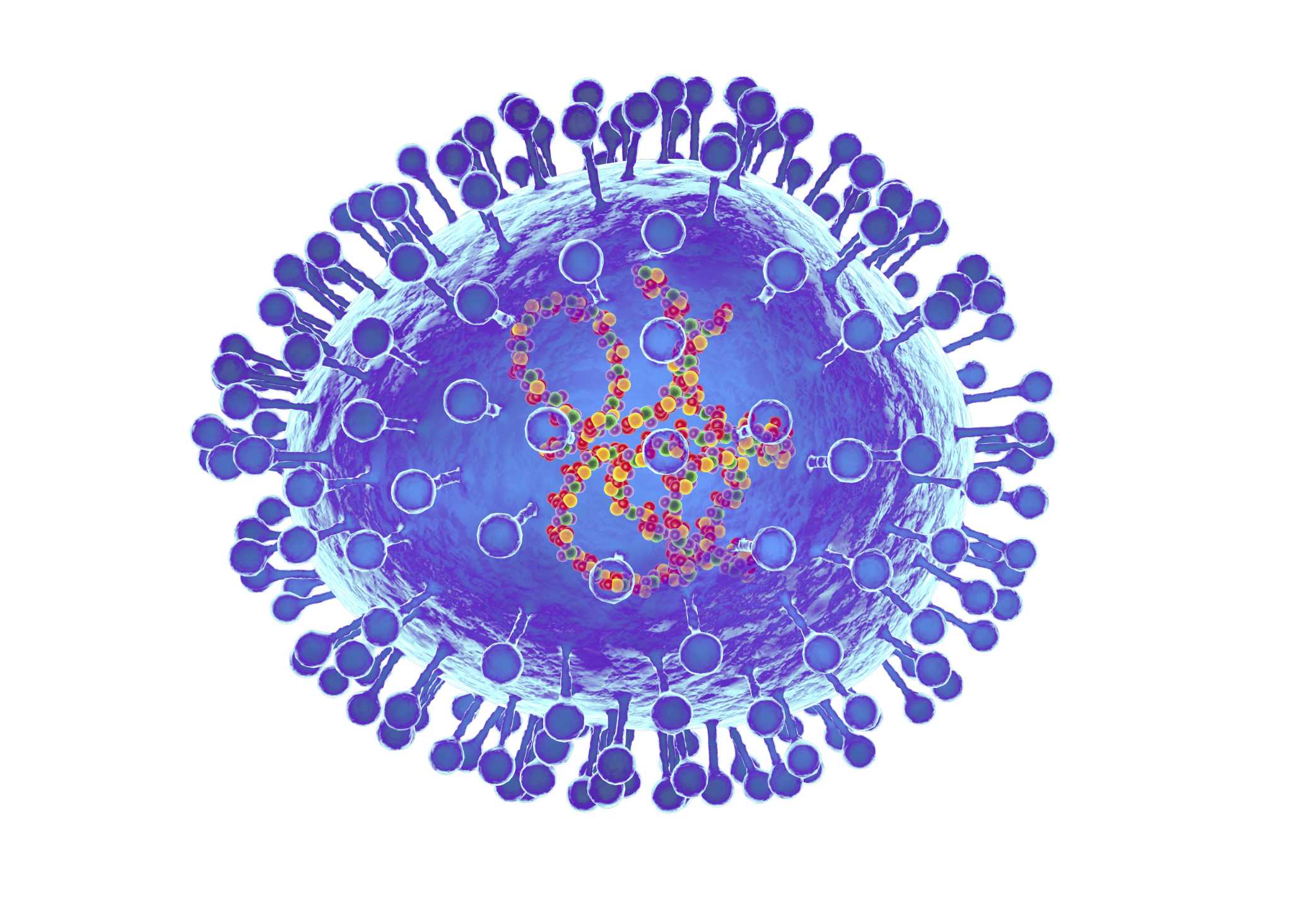


The recent spread of a new virus, human metapneumovirus (HMPV), in China has sparked global concerns, with reports of increasing cases among children under 14. However, Indian health experts and the Union Ministry of Health and Family Welfare have dismissed the possibility of a widespread disruption. This is due to previous knowledge about HMPV and its similarity to respiratory syncytial virus (RSV), a common respiratory pathogen. While HMPV may be a trigger for asthma in infants, it is not as deadly as Covid-19 and there is no reason for alarm yet.
Human Metapneumovirus (HMPV): An Overview
Human metapneumovirus (HMPV) is a respiratory virus that infects the lungs and airways. It is a common cause of respiratory infections, particularly in young children and infants. HMPV was first identified in the Netherlands in 2001 and has since been detected in many countries around the world.
Symptoms and Transmission
HMPV infection can cause a range of symptoms, including:
HMPV is spread through close contact with an infected person or by touching objects contaminated with the virus.
Risk Factors
Children under 14 years old are at highest risk for severe HMPV infection. Other risk factors include:
Treatment and Prevention
There is no specific treatment for HMPV infection. Symptoms are typically treated with supportive care, such as rest, fluids, and pain relievers. Antiviral medications may be prescribed for severe cases.
There is no vaccine to prevent HMPV infection. However, there are steps you can take to reduce your risk of exposure, including:
Recent Outbreak in China
In November 2022, there was an outbreak of HMPV in China. The outbreak primarily affected children under 14 years old, and there were a number of severe cases. However, Indian health experts and the Union Ministry of Health and Family Welfare have dismissed the possibility of a widespread disruption in India. This is because HMPV is a known virus and its symptoms are similar to those of other respiratory pathogens, such as RSV.
Top 5 FAQs and Answers
1. What is HMPV? HMPV is a respiratory virus that infects the lungs and airways.
2. How is HMPV spread? HMPV is spread through close contact with an infected person or by touching objects contaminated with the virus.
3. Who is at risk for severe HMPV infection? Children under 14 years old are at highest risk for severe HMPV infection. Other risk factors include premature birth, congenital heart disease, and chronic lung conditions.
4. How is HMPV treated? There is no specific treatment for HMPV infection. Symptoms are typically treated with supportive care, such as rest, fluids, and pain relievers. Antiviral medications may be prescribed for severe cases.
5. Is there a vaccine to prevent HMPV infection? There is no vaccine to prevent HMPV infection. However, there are steps you can take to reduce your risk of exposure, including washing your hands frequently, avoiding close contact with people who are sick, and staying home from school or work if you are sick.

On October 24, the global community commemorates World Polio Day to honor the legacy of Dr. Jonas Salk and the efforts of countless individuals and organizations in the fight against polio. This highly contagious and potentially deadly disease, once a widespread epidemic, is now largely preventable thanks to the development of a life-saving vaccine. India's successful eradication of polio serves as a testament to the importance of strong vaccination programs and collaborations in public health initiatives.

As winter arrives in India, so does the hazardous air pollution. Delhi NCR's AQI has already crossed the 400 mark, making it crucial to invest in air purifiers, especially after Diwali. Dyson, Qubo, HomePure, and Philips have launched high-quality air purifiers with advanced features to tackle different types of pollutants and create cleaner indoor air. With prices ranging from Rs 5,000 to Rs 1 lakh, these purifiers are a practical and timely purchase for a healthier living.

In a recent family vlog, Indian celebrity couple Shoaib Ibrahim and Dipika Kakar shared their "natural" hair care routine for their son, using a homemade mask made with rice flour, flax seeds, and coconut oil. However, experts warn that what works for adults may not be suitable for babies, whose sensitive skin and scalp could react to the ingredients. While the ingredients may improve hair texture, they do not necessarily promote hair growth. Instead, a healthy diet and good scalp care are more important in maintaining healthy hair.

A recent consumer study has found multiple brands of soft contact lenses in the U.S. to contain "forever chemicals" that can be harmful to both the body and the environment. The study, conducted by the nonprofit organization Environmental Health Sciences, tested 18 varieties of popular contact lenses and found all of them to contain markers for PFAS. Brands such as Acuvue, Alcon, and CooperVision were among the list of affected products. This news serves as a cautionary lesson on the potential risks of overusing contact lenses.

On the birth anniversary of Dr. APJ Abdul Kalam, the ‘Missile Man’ of India, tributes pour in on social media celebrating his life, vision and impact. A visionary scientist, inspiring leader and true patriot, Dr. Kalam's humility, compassion and constant interaction with students continue to inspire generations. His tireless efforts in defense, science and youth empowerment have strengthened India's path towards self-reliance and his legacy continues to motivate young minds to dream big and work hard for the nation.

Recent studies have found that extreme heat, particularly when combined with high humidity, can have a significant impact on mental health. A study in India showed that when wet bulb temperature exceeded 27°C, the probability of reporting severe depression increased by 0.5%, even when the temperature was slightly lower. This finding is consistent with global reviews that have linked high temperatures to mood disorders, increased hospital admissions for psychiatric conditions, and even elevated suicide risk. The Lancet has also published evidence that rising temperatures worldwide are a growing threat to emotional and cognitive health.

In a meeting with university officials in Udaipur, Rajasthan Governor Hari Bhau Bagde stressed the importance of incorporating India's ancient knowledge traditions into academic research. He highlighted the deep repository of knowledge in India since ancient times and urged scholars and scientists to draw upon this tradition in their work. Bagde also suggested making ancient texts available in university libraries for study and research purposes, in order to shape the intellectual abilities and love for the nation among the younger generation.

John Clarke, Michel H. Devoret, and John M. Martinis have been awarded the 2025 Nobel Prize in Physics for their pioneering research into quantum mechanical tunnelling. Their discovery has opened new possibilities for quantum technologies, and will be formally presented on December 10, the anniversary of Alfred Nobel's death. This announcement follows the tradition of recognizing transformative contributions to science, and the award carries a prestigious prize of 11 million Swedish kronor.

The US-Japanese trio of Mary E Brunkow, Fred Ramsdell, and Shimon Sakaguchi have won the 2025 Nobel Prize in physiology or medicine “for their discoveries concerning peripheral immune tolerance". Through their research, they have shown how the immune system is kept in check and why serious autoimmune diseases do not affect everyone. Sakaguchi found a new class of T cells, while Brunkow and Ramsdell discovered the explanation behind a specific mouse strain's vulnerability to autoimmune diseases. Together, they have significantly advanced our understanding of immunology and autoimmune diseases.

Indian astronaut Shubhanshu Shukla, who recently completed a 20-day space mission, shared his insights and experiences at the convocation ceremony of Dr. APJ Abdul Kalam Technical University. He highlighted the importance of patience, focus, and the inevitability of change in achieving success, and urged the graduating class to actively contribute to shaping a fearless and ambitious India.